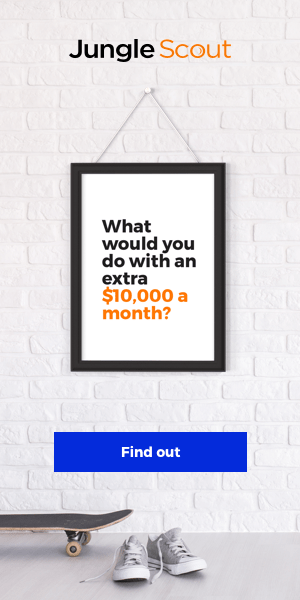Key Components for Crafting a High-Impact Paid Social Media Strategy
Developing a robust paid social media strategy is crucial for businesses seeking to thrive and elevate their online presence in a fiercely competitive digital landscape. This undertaking necessitates a comprehensive understanding of the diverse array of social media platforms available, alongside a cohesive strategy that aligns marketing initiatives with the overarching goals of the organization. By establishing a solid groundwork, marketers can devise strategies that are not only effective but also precisely targeted, leading to significant outcomes for the business.
Defining Concrete and Achievable Objectives: Aligning Social Media Goals with Business Vision

At the outset, it is vital to articulate clear and specific objectives to foster a successful paid social media strategy. These goals should adhere to the SMART framework—specific, measurable, achievable, relevant, and time-bound. By ensuring that your social media objectives are in harmony with broader business aspirations, you create a solid framework for assessing the success of your campaigns. This strategic alignment sharpens focus, guiding your efforts towards attaining measurable outcomes that directly support your business growth.
For instance, if your primary goal is to boost brand awareness, you would likely concentrate on metrics such as reach and impressions to evaluate visibility. On the other hand, if your objective is to drive sales, your focus would shift to conversion rates and return on ad spend (ROAS). Clearly articulating these goals to your team fosters a shared understanding of the purpose behind each campaign. This collaboration enhances a coordinated approach to content creation and audience engagement, ultimately leading to a more effective paid social media strategy.
While establishing your objectives, it’s crucial to consider the different stages of the marketing funnel—awareness, consideration, and conversion—equally. Each stage demands tailored messaging and strategies to effectively engage potential customers. By pinpointing where your audience stands in their purchasing journey, you can craft targeted campaigns that resonate with them and inspire action, significantly boosting the overall success of your marketing initiatives.
Deepening Audience Insights: Developing Comprehensive Customer Personas
The success of your paid social media strategy largely depends on a thorough understanding of your audience. This process involves creating detailed customer personas that encapsulate demographics, interests, behaviors, and pain points. A well-researched persona empowers you to produce content that directly addresses the needs and desires of your target audience, greatly enhancing engagement and interaction with your brand.
Start by analyzing customer data, including insights gathered from website analytics and social media interactions. Tools such as Facebook Audience Insights and Google Analytics can provide valuable information about your customers’ identities and their levels of engagement with your brand. Additionally, conducting surveys or interviews can yield qualitative data that enriches your personas, offering deeper insights into their motivations and preferences.
Once you have developed your personas, leverage them to inform your advertising creative and targeting strategies effectively. For example, if your research reveals that your audience prioritizes sustainability, ensure this message is consistently woven into your advertising efforts. By customizing your content to resonate with your audience, you not only boost engagement levels but also significantly enhance conversion rates, thereby reinforcing the overall effectiveness of your paid social media strategy.
Strategic Budget Allocation: Maximising Advertising Spend for Optimal ROI
Strategic budget allocation is foundational to any paid social media strategy. Knowing how to wisely distribute your resources can deeply impact the return on investment (ROI) of your campaigns. Begin by establishing your total marketing budget and then designate a specific portion for social media advertising, guided by your goals and anticipated outcomes. This focused approach ensures that your financial resources are utilized in the most effective manner, maximizing your advertising impact.
When determining your budget, it’s essential to factor in the cost per click (CPC) and cost per impression (CPM) associated with each platform. These expenses can vary significantly, making it crucial to assess where your audience is most active. For instance, investing more in high-performing platforms like Facebook or Instagram may yield superior results compared to spreading your budget too thin across multiple channels, thereby optimizing your advertising expenditure for maximum effectiveness.
Additionally, continuously monitor the performance metrics of your campaigns. Regularly evaluating which ads deliver the best outcomes allows for data-driven adjustments to your budget allocation. This flexibility ensures you maximize your investment, helping you achieve the objectives outlined in your paid social media strategy and attain your desired results.
Harnessing Analytics for Continuous Improvement of Paid Social Media Strategies

Analyzing data is crucial for refining your paid social media strategy. By leveraging insights gathered from your campaigns, you can make informed decisions that drive performance enhancements over time. A strong grasp of key performance indicators (KPIs) combined with the implementation of A/B testing practices is essential for ongoing optimization, enabling you to continuously improve your advertising efforts.
Establishing Key Performance Indicators: Measuring Success Beyond Basic Metrics
While metrics such as clicks and impressions are significant, they provide only a superficial view of your campaign’s overall effectiveness. To gain a comprehensive understanding of your paid social media strategy performance, it is imperative to identify and monitor a diverse range of KPIs that align with your established objectives. This holistic approach enables more accurate evaluations and necessary adjustments.
Consider tracking metrics such as engagement rates, conversion rates, and customer acquisition costs (CAC). Engagement rates reveal how users interact with your content, while conversion rates indicate the number of interactions leading to desired actions, such as purchases or sign-ups. Moreover, monitoring your CAC provides insight into the cost-effectiveness of your campaigns and helps inform future budgeting decisions.
By utilizing these metrics, you can uncover trends and patterns that guide your future strategies. For instance, if you notice high engagement but low conversion rates, this discrepancy may indicate a disconnect between your ad messaging and the user experience on your landing page. Such insights allow for targeted adjustments that can enhance overall campaign performance, ultimately driving better results.
Employing A/B Testing: Optimizing Ad Elements for Higher Engagement
A/B testing, also known as split testing, is a powerful technique for optimizing your paid social media strategy. By experimenting with different elements such as headlines, images, and calls to action, you can determine which components resonate most effectively with your audience. This data-driven approach empowers you to refine your ads for maximum engagement and conversions, thus improving overall campaign effectiveness.
When conducting A/B tests, it’s vital to isolate one variable at a time. For example, if you’re testing two different images, keep the headline and copy consistent. This method ensures that performance differences can be directly attributed to the variable being tested, providing clear insights into what works best.
Furthermore, ensure that your sample size is sufficiently large to yield statistically significant results. Once you have gathered enough data, analyze the outcomes to identify the most effective variant. Incorporate these insights into your broader paid social media strategy, continually iterating to enhance performance and drive superior results.
Leveraging Attribution Models: Understanding the Customer Journey

Attribution models are critical for assessing the effectiveness of your paid social media strategy. These models aid in identifying which channels and touchpoints significantly contribute to conversions. Understanding the customer journey is essential for effective resource allocation and optimizing future campaigns for enhanced performance.
Several attribution models, including first-click, last-click, and multi-touch attribution, should be considered. Each model offers distinct insights into how customers engage with your brand. For example, first-click attribution credits the initial touchpoint, while last-click attribution attributes the conversion to the final interaction before the purchase, providing a unique perspective on customer interactions.
Choosing the right model depends on your business objectives and the complexity of your customer journey. Multi-touch attribution is often preferred for social media campaigns, as it recognizes the multiple touchpoints contributing to a conversion. By applying the appropriate attribution model, you can gain deeper insights into your audience’s behavior, allowing you to tailor your paid social media strategy and improve your marketing efforts.
Proven Tactics for Enhancing the Impact of Paid Social Media Campaigns
Having established the foundational components of your paid social media strategy, it is time to delve into essential tactics that can drive impactful campaigns. Implementing innovative ad formats, leveraging advanced targeting options, and executing effective retargeting strategies are all vital elements of a successful social media advertising approach.
Innovative Ad Formats: Captivating Audiences with Video, Carousel, and Story Ads
Creativity is key to an engaging paid social media strategy. The selection of ad formats can profoundly impact engagement and conversion rates. Video, carousel, and story ads provide distinct advantages that can effectively capture and retain your audience’s attention.
Video ads are particularly powerful for conveying complex messages in a quick and dynamic manner. They enable storytelling that fosters emotional connections and elevates engagement levels. Research indicates that video content often leads to higher conversion rates compared to static images, making them an essential component of your advertising toolkit.
Carousel ads allow you to showcase multiple products or features within a single ad unit. This interactive format encourages users to swipe through various images, offering a richer and more engaging experience. It is especially advantageous for e-commerce brands seeking to highlight a wide range of offerings, enabling potential customers to explore their options seamlessly.
Story ads, prevalent on platforms like Instagram and Facebook, deliver a full-screen immersive experience that capitalizes on the trend of ephemeral content. These ads can create a sense of urgency and excitement, prompting users to take immediate action. By experimenting with various ad formats, you can identify which resonates best with your audience, thereby enhancing the overall effectiveness of your paid social media strategy.
Advanced Audience Targeting Techniques: Utilizing Demographic, Interest, and Behavioral Insights
One of the most powerful aspects of a paid social media strategy is the ability to precisely target specific audiences. By leveraging demographic, interest, and behavioral data, you can ensure that your ads reach the right individuals at the most opportune moments, significantly enhancing the effectiveness of your campaigns.
Demographic targeting enables you to set criteria such as age, gender, location, and language. This foundational level of targeting is crucial for ensuring your ads are displayed to individuals fitting your customer profile. However, to further refine your campaigns, it’s essential to delve deeper into interest and behavioral targeting, which can yield more precise outcomes.
Interest targeting allows you to connect with users based on their hobbies or interests, ensuring your content resonates with those likely to engage with your brand. Conversely, behavioral targeting focuses on users’ online activities, such as past purchases or website interactions, creating highly personalized ad experiences that enhance engagement and conversion rates.
By employing these targeting options, your paid social media strategy can more effectively engage audiences, improving conversion rates and overall campaign performance, ultimately driving greater success for your business.
Powerful Retargeting Techniques: Re-engaging Users with Customized Content
Retargeting serves as a potent tactic within your paid social media strategy, enabling you to reconnect with users who previously showed interest in your brand but did not complete a conversion. By delivering personalized ads to these audiences, you can remind them of their initial interest and encourage their return, significantly increasing your chances of conversion.
There are numerous effective retargeting strategies at your disposal. For instance, you might design ads that feature products users viewed on your website, enticing them with reminders and exclusive offers. This tactic leverages the familiarity principle, boosting the likelihood of conversion while fostering a sense of connection with your audience.
Another effective strategy involves segmenting your retargeting audiences based on their behaviors. For example, users who added items to their shopping cart but did not complete their purchase can be targeted with specific messages addressing potential objections or offering incentives, such as discounts or free shipping, to encourage them to finalize their transactions.
Additionally, consider employing sequential retargeting, where you display different ads to users based on their position in the customer journey. This tailored approach enhances user experience and increases the likelihood of conversion, making retargeting an invaluable element of your paid social media strategy.
Exploring the Social Media Landscape: An In-Depth Guide to Paid Social Media Strategies
The social media landscape is extensive and diverse, making it imperative for marketers to understand the intricacies of each platform when developing their paid social media strategy. From the vast audiences found on Facebook to the visually-driven content on Instagram, each platform presents unique engagement opportunities that can be strategically harnessed.
Maximizing Facebook Advertising: Best Practices for Engaging a Diverse Audience
As one of the largest social media platforms, Facebook offers advertisers unmatched opportunities. A deep understanding of its advertising features and best practices is essential for optimizing your paid social media strategy on this platform. This knowledge can significantly enhance the effectiveness and reach of your campaigns.
Start by leveraging Facebook’s comprehensive targeting options, which allow you to engage specific demographics and interests. Utilize custom audiences to reach users who have previously interacted with your brand, and implement lookalike audiences to expand your outreach to similar users, thereby greatly enhancing your advertising efforts.
Visual content is paramount on Facebook, so ensure your ad creative is captivating and relevant. Utilize high-quality images or videos and experiment with various formats, such as carousel ads, to determine what resonates best with your audience. Furthermore, incorporating user-generated content can amplify authenticity and drive engagement, making your ads more relatable to potential customers.
Finally, consistently monitor and adjust your campaigns based on performance metrics. Facebook’s Ads Manager provides valuable insights to help you refine your strategy and optimize your budget allocation for maximum effectiveness, ensuring you meet your marketing goals.
Utilizing Instagram for Effective Marketing: Mastering Visual Storytelling
Instagram’s inherently visual platform makes it an ideal space for brands aiming to narrate their stories through imagery and video. A successful paid social media strategy on Instagram revolves around crafting visually compelling content that captivates attention and drives user interaction.
To begin, prioritize high-quality visuals that align with your brand’s aesthetic. Instagram users are drawn to stunning content, so investing in professional photography or graphic design can significantly elevate your ad creativity and overall campaign effectiveness. Additionally, leverage Instagram Stories to create immersive, ephemeral content that prompts immediate action from your audience.
Hashtags play a critical role in expanding your reach on Instagram. Research relevant hashtags that your target audience is likely to follow and incorporate these into your posts to enhance visibility and connect with users interested in your offerings, thereby increasing engagement rates.
Engagement is vital on Instagram, so encourage interaction through clear calls to action in your ads. Whether prompting users to visit your website or engage with your content, providing explicit instructions can lead to better results from your campaigns, ultimately elevating your overall marketing efforts.
Engaging B2B Audiences through LinkedIn Campaigns: Connecting with Professionals
LinkedIn stands out as the premier platform for B2B marketing, making it essential for any paid social media strategy aimed at professionals. With its focus on professional networking, LinkedIn provides unique opportunities for brands to effectively engage decision-makers and industry leaders.
To maximize your presence on LinkedIn, start by crafting compelling ad copy that directly addresses your target audience. Highlight the benefits of your product or service in a professional tone that resonates with business professionals, clearly showcasing your value proposition.
Utilize LinkedIn’s advanced targeting options to reach specific job titles, industries, or company sizes, ensuring your ads target the right individuals. Sponsored Content, Message Ads, and Dynamic Ads are effective formats for engaging users on LinkedIn, allowing for tailored content delivery that meets the needs of your audience.
Lastly, leverage LinkedIn Analytics to track the performance of your campaigns. Understanding key metrics such as click-through rates and engagement can inform your strategy and help you optimize future campaigns for better results, ensuring you achieve maximum impact from your advertising efforts.
Staying Ahead of Market Trends: Adapting to the Evolving Digital Marketing Landscape
The digital marketing environment is in a constant state of flux, and staying attuned to trends is vital for a successful paid social media strategy. By embracing emerging platforms, forging influencer partnerships, and adapting to privacy regulations, brands can maintain a competitive edge and ensure their strategies remain relevant.
Emerging Platforms: Engaging Younger Audiences on TikTok and Snapchat
As younger demographics increasingly gravitate towards platforms like TikTok and Snapchat, marketers must adjust their paid social media strategy to effectively engage this audience. These platforms provide unique opportunities for creative and engaging advertising that resonates with younger users.
TikTok, known for its short-form video content, encourages brands to explore innovative approaches. Leveraging trending sounds and challenges can propel your content to go viral, reaching a vast audience. Furthermore, consider collaborating with influencers on TikTok to amplify your message and enhance credibility, thereby broadening your reach.
Snapchat’s emphasis on ephemeral content is ideal for creating a sense of urgency. Utilize Snap Ads and Story Ads to promote limited-time offers or product launches, capturing the attention of users who seek immediate engagement. Additionally, incorporating augmented reality (AR) filters can enhance user interaction and engagement, creating memorable experiences that resonate with users and yield better results for your campaigns.
By exploring these emerging platforms, you can diversify your paid social media strategy and tap into new audiences eager for innovative content, ensuring your marketing efforts remain fresh and relevant.
Building Authentic Connections through Influencer Partnerships
Influencer marketing continues to gain traction, as consumers increasingly seek authentic connections with brands. Collaborating with influencers can elevate your paid social media strategy by leveraging their credibility and established audiences, helping to build trust and engagement.
When selecting influencers, assess their alignment with your brand values and target audience. Micro-influencers often boast high engagement rates and niche followings, making them valuable partners for targeted campaigns that resonate more deeply with specific audience segments.
Create creative briefs that empower influencers to authentically express your brand message, leading to genuine content creation. Encourage them to share their experiences with your products or services, showcasing their benefits in relatable ways that effectively engage their followers and drive interest in your brand.
Finally, monitor the performance of influencer campaigns through engagement metrics and conversions. This data can inform future collaborations and help refine your overall paid social media strategy, ensuring your marketing efforts continually improve and adapt to audience preferences.
Adapting to Privacy Regulations: Navigating Changes in Data Collection Practices
As privacy regulations evolve, brands must adjust their paid social media strategy to ensure compliance while effectively reaching their audiences. With laws like GDPR and CCPA, transparency and user consent have become paramount in the digital marketing landscape.
Review your data collection practices to ensure they comply with legal requirements. Clearly communicate to users how their data will be utilized and provide options to opt-out of tracking when necessary, fostering a sense of trust and security among your audience.
Consider leveraging first-party data collected directly from your audience, such as email sign-ups, website interactions, and social media engagements. Building strong relationships with your audience allows you to gather valuable insights without relying heavily on third-party data, ensuring you remain compliant while still gaining meaningful information.
Staying informed about evolving regulations will enable your paid social media strategy to remain effective while prioritizing user privacy, ultimately fostering trust between your brand and your audience, which is essential for long-term success.
Learning from Real-World Success Stories: Case Studies in Effective Paid Social Media Strategies
Analyzing real-world case studies can provide invaluable insights into successful paid social media strategies. By examining the achievements and challenges faced by other brands, you can refine your approach and incorporate best practices into your campaigns to optimize your advertising efforts.
Boosting E-commerce Sales Through Targeted Social Campaigns
E-commerce brands have effectively leveraged the power of paid social media strategy to drive sales and enhance online visibility. A notable example is a fashion retailer that deployed targeted Facebook and Instagram ads to showcase its latest collection, exemplifying the effectiveness of focused advertising.
Through a robust retargeting strategy, the brand engaged users who had previously interacted with its website but did not complete a purchase. By offering limited-time discounts and utilizing user-generated content, the campaign experienced a significant increase in conversion rates, highlighting the power of personalized advertising and strategic audience engagement.
Moreover, the brand formed partnerships with influencers to broaden its reach. Collaborating with fashion influencers who aligned with their aesthetic helped enhance credibility and drive traffic to their online store. This combination of targeted ads and influencer marketing proved to be a successful strategy, significantly boosting sales during critical promotional periods.
Raising Awareness and Funds: Success Stories from Non-Profit Campaigns
Non-profit organizations can also greatly benefit from a well-executed paid social media strategy. For instance, a prominent charity effectively utilized Facebook ads to raise awareness for a fundraising campaign, showcasing the potential of social media in the non-profit sector.
By producing compelling video content that illustrated the impact of donations, the organization engaged its audience on an emotional level. The ads featured powerful testimonials from beneficiaries, emphasizing the importance of contributions and fostering a connection with potential donors.
Targeting specific demographics and interests allowed the charity to reach potential donors who were likely to resonate with its mission. The campaign resulted in a significant increase in donations, demonstrating the effectiveness of social media advertising in driving positive change and raising awareness for important causes.
Building Brand Awareness on a Budget: Startup Success Examples
A strategic paid social media strategy can be transformative for startups operating with limited budgets. One tech startup effectively utilized Twitter and LinkedIn ads to build brand awareness and generate leads, showcasing the efficacy of targeted advertising.
The startup successfully reached decision-makers in specific industries by focusing on niche targeting. Creating informative content that outlined its product’s benefits helped position the brand as an authority within its market, enhancing its credibility and attracting interest.
By employing A/B testing, the startup refined its ad creative and messaging, improving engagement rates and overall campaign performance. By strategically allocating its budget and leveraging organic social media efforts alongside paid advertising, the brand successfully established its presence in a competitive landscape.
Addressing Common Inquiries About Paid Social Strategies: Frequently Asked Questions
What Budget Should I Set Aside for Paid Social Advertising?
The budget you allocate for paid social advertising depends on your overall marketing budget and specific objectives. A common recommendation is to dedicate 10-20% of your total budget to social media ads, adjusting this based on platform performance and campaign goals.
How Do Organic and Paid Social Media Approaches Differ?
Organic social media encompasses unpaid interactions and content shared on social platforms, while paid social media involves sponsored ads targeting a specific audience. Both strategies work synergistically to maximize visibility and effectiveness in achieving your marketing objectives.
How Can I Gauge the Success of My Paid Social Campaigns?
Success can be measured through various KPIs, including engagement, conversion, and ROI. Tools like Facebook Ads Manager and Google Analytics provide insights to evaluate campaign performance effectively, assisting you in refining your strategies accordingly.
Which Platforms Are Most Suitable for Paid Social Advertising?
The most effective platforms depend on your target audience. Facebook and Instagram are excellent for B2C marketing, while LinkedIn is ideal for B2B campaigns. Emerging platforms like TikTok and Snapchat cater to younger demographics, offering unique opportunities for engaging content.
How Can I Enhance the Targeting of My Ads?
Utilizing demographic, interest, and behavioral data can significantly improve your targeting effectiveness. Custom audiences and lookalike audiences on platforms like Facebook facilitate precise targeting based on user behavior, markedly enhancing campaign performance.
What Creative Formats Are Most Impactful for Paid Social Ads?
Video ads, carousel ads, and story ads are highly effective formats. They engage users visually and encourage interaction, making them ideal for capturing attention within crowded feeds and driving engagement.
How Frequently Should I Review and Adjust My Campaigns?
Regular reviews should be conducted at least every two weeks. Frequent monitoring allows you to identify trends, optimize budgets, and adjust targeting based on performance metrics, enhancing overall effectiveness and ensuring successful outcomes.
What Role Do Influencers Play in a Paid Social Strategy?
Influencers can enhance authenticity and reach by promoting your brand to their followers. Collaborating with relevant influencers helps build trust and can drive engagement and conversions, making them valuable assets in your marketing efforts.
How Do Privacy Regulations Impact Paid Social Advertising?
Privacy regulations necessitate transparency regarding data collection and usage. Compliance is essential, as failure to adhere to regulations can lead to penalties and diminished consumer trust, adversely affecting your brand’s reputation.
What Advantages Does Retargeting Offer in Paid Social Campaigns?
Retargeting allows brands to reconnect with users who previously engaged with their content. This strategy enhances conversion rates by reminding potential customers of their interest and motivating them to take action, significantly improving campaign effectiveness.
Join Our Community on Facebook!
The post Paid Social Media Strategy: Elevate Your Brand appeared first on Ezi Gold.
The Article: Paid Social Media Strategy to Enhance Brand Visibility Was Found On https://ai.ezi.gold
The Article Paid Social Media Strategy for Boosting Brand Presence Was Found On https://limitsofstrategy.com
The Article Paid Social Media Strategy to Enhance Brand Visibility First Appeared ON
: https://ad4sc.com









Comments are closed